Rift Cleric Class Guide: A Review of the Cleric Souls
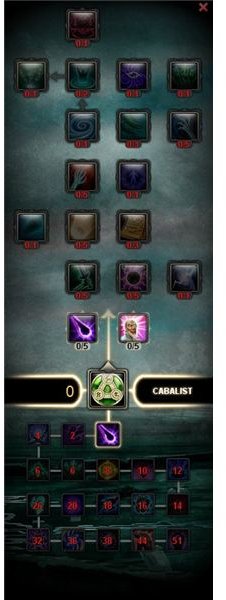
Healing and More
Unlike most modern MMOs, Rift’s class system takes a back-to-roots approach. There are just four classes (warrior, cleric, rogue and mage) and they fill the archtypes you’d expect. However, each of these classes have access to a number of individual souls - or unique talent trees.
If you roll a character of a specific class, you will be able to pick three souls as you progress through the newbie areas; however, at level 13 you will be able to complete quests that give you access to every single soul available to your class. You can then mix-and-match any three at a time.
In this guide, we’re going to take a look at teach soul available to the class and provide a brief overview. Then I will provide a few recommendations for soul combinations that are particularly effective.
Cabalist
The Cabalist is perhaps the oddest class in the Cleric class. Something of a dark priest, the Cabalist calls upon shadowy energies to smite foes. This makes the Cabalist a ranged caster, and as you’ll notice if you take a brief look at their abilities, they focus on AOE damage.
Cabalists have two class mechanics that are unique to them. One is called Lurking Decay, and it’s applied using the Decay channeled ability. Lurking Decay stacks on a target can be consumed by certain abilities for extra damage, most notably the Obliterate spell, a deadly AOE nuke.
The other mechanic is the Sigil, a buff that Cabalists can place on themselves that is consumed upon the usage of certain spells. Sigils have 2 minute cooldowns, but are very powerful; the Sigil of Power, for example, can regenerate most of the Cabalist’s mana, while the Sigil of Secrecy triggers an AOE silence that lasts 5 seconds.
Cabalists are a bit confusing to play due to their unusual mechanics, so they’re not a good choice for your first class. Once you’re more familiar with Rift’s class system, however, they’re worth a look.
Druid

The Druid is a melee DPS and pet soul. In practice it fills a role very similar to the Shaman, but the ability of the Druid are a bit more varied and offer a little more utility in exchange for damage output, that while not nessicarily worse, is heavily reliant on the use of a pet who can be killed or lost.
Up until level 31, Druids only have access to the Fairie pet. This utility pet can cast a weak ranged nuke and also can heal allies, although its healing abilities are by no means capable of healing a group in a dungeon. At level 31, with 31 points invested into the Druid soul talent tree, you can pick up the Satyr pet. This DPS pet can’t take much damage, but it can dish out a fair amount of pain.
In addition to the healing pet, Druid utility comes across in a number of other ways. Trickster Strike, a melee attack made available at 4 points into the talent tree, reduces the melee damage of an opponent by 5%. Druids also have access to some useful PvP utility such as an AOE 4-second root, a 15-second healing debuff, a silence ability and a sleep ability.
Inquisitor

The Inquisitor is essentially the straightforward Cleric nuke class. They have early access to two single-target magical spells, and they also have access to several powerful DOTs. There are some AOE abilities thrown in, too, although not as many as the Cabalist has access to.
Inquisitor is a great choice for solo leveling. This soul can do a lot of damage without going too far into the tree, and you can gain access to some great utility spells, such as an instant-cast snare with no global cooldown and a spell that increases all of your magical damage against a target. Although not as survivable as the melee Clerics, the Inquisitor can be made reasonably tough if you pair it with a healing soul.
Healers who want some extra offensive power will also likely enjoy the Inquisitor soul. It doesn’t take much of an investment to gain access to nice talents, like the cast-time reduction of Bolt of Judgement or the chance to make Bolt of Depravity, a powerful nuke with a prohibitive 3-second cast time, instant-cast.
Justicar
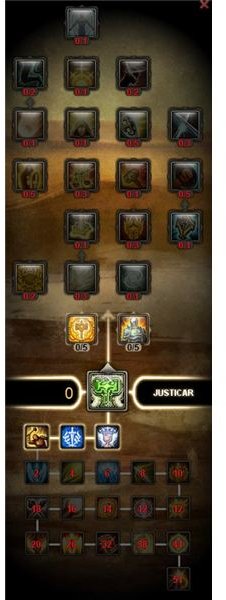
The Justicar is the Cleric tanking tree. With ten points invested the Justicar gains access to the Mein of Leadership, a buff that significantly increases the Justicar’s armor and defensive abilities. In addition to this, the Justicar has a number of talents that increase the effectiveness of block, parry, and etc.
In addition to tanking, Justicars have some healing ability. The build up Convictions by hitting targets with Justicar abilities, and these can ten be spent (along with mana) to heal allies. However, the Justicar is not generally capable of healing dungeons by itself; being forced to melee in order to heal allies makes the class too vulnerable, and the mana cost of the Justicar’s healing is inefficient.
Justicar is a soul that generally is difficult to hybridize with other souls because Mein of Leadership, the tanking buff, puts a penalty on the attack power of non-Justicar abilities. If you have the itch to tank, however, Justicar is the way to go.
Purifier
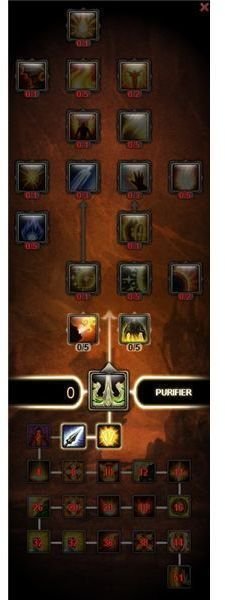
One of the main healing souls, the Purifier focuses heavily on static single-target healing. They have a number of tools available for this purpose, and they’re able to put out a lot of sustained healing on a single target. This makes them an extremely good choice for any situation where the incoming damage is generally predictable, such as most dungeons (most damage should be headed the tank’s way).
Better yet, the Purifier has access to a number of shields that protect allies by absorbing damage. In addition, many players like to pick up Purifier because it offers a self-target shield as a 0-point ability. In other words, you get this shield simply for adding Purifier to your build even if you don’t put any points into the soul.
The downside of Purifier is the slim selection of instant-cast and AOE heals. This can make the Purifier feel a bit unwielding in situations where a lot of players are taking damage at once.
Sentinel
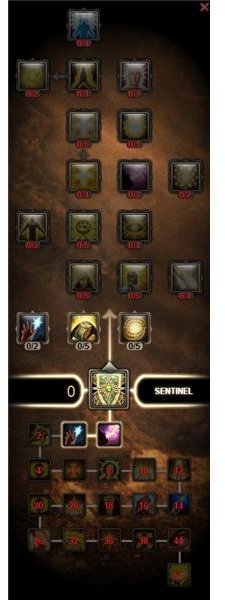
Another main healer, the Sentinel has some similarities to the Purifier. Like the Purifier, the Sentinel focuses on traditional heals (in other words, heals that are cast directly on a target and heal for a fixed amount). However, the Sentinel has more instant-cast abilities and some AOE heals, as well as talents that significantly improve the power of this soul’s AOE heals.
Some players refer to the Sentinel has “the AOE healer” and to an extent this is correct. However, this is not to say that the Sentinel should always AOE heal - it is simply an option. In fact, AOE healing remains mana-costly, so Sentinels will likely be using single-target heals just as often as AOE heals.
Many players take Sentinel as a 0-point soul because of Healing Breath, a powerful instant-cast heal on an 8-second timer. Like the Purifier’s shield, this instant heal can be had without spending any points in the soul - you simply need to select the soul as one of your three active souls. Sentinel also has synergy with all DPS souls because it offers two low-tier talents that provide passive buffs to crit change and crit damage.
Shaman
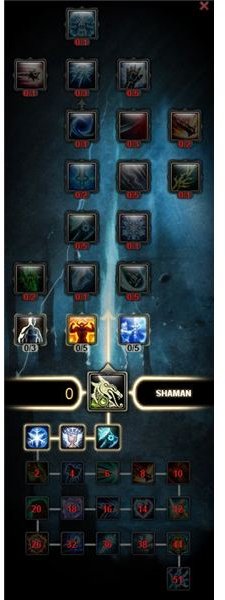
A pure melee DPS soul, the Shaman like to get up close and personal with his appoints and smack the around with a big two-handed mace or hammer. As a DPS Cleric, the Shaman can take out opponents quickly, but relies heavily on crit damage to deal. In fact, the Shaman has a number of reactive ability that trigger offer critically hitting an opponent, missing an opponent, or being critically hit by an opponent.
This can make the Shaman feel a bit random at times; when things go well, they can go very very well. But at other times, when nothing triggers, the DPS of the Shaman can feel poor.
Shaman is another soul that tends to reward a heavy point investment. Most of the talents of the Shaman a great for the purpose of increasing DPS, and the 31-point talent called Rage of the North ensures that the Shaman critically hits with every attack for 7 seconds. This can be devastating when used at the right time.
Warden
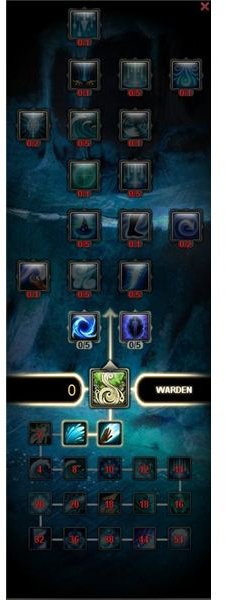
The Cleric’s final main healing soul, the Warden is different from the other healing souls because it focuses on HOT (heal over time) spells. In other words, most of the abilities of the Warden don’t instantly restore health to an ally but instead heal the ally over a period of time. The HOTs available to the Warden come in both single-target and AOE varieties.
This style of healing can have difficulty keeping up with burst damage, but is very efficient. As if to drive that point home, the Warden talent tree has some talents that are great for your mana pool including a first-tier talent that increases your mana by 2% per point up to a maximum of 10%.
Wardens receive a 0-point self-target HOT that is often selected by soloing DPS Clerics as a means of off-setting damage taken from opponents, which increases leveling efficiency. The Warden also receives a powerful knockback attack after 4 points are spent into the soul - all caster Clerics should consider this, as it’s great way to keep mobs and enemy players from eating your for breakfast.
Templar
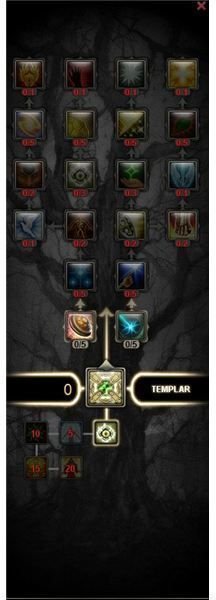
The Templar is the PvP soul for the Cleric. It is accessible from a PvP vendor at a price of 2500 favor.
Because Templar is a PvP soul, it is a fair bit different than any of the other souls. Players can spend no more than 21 points into this soul, and the abilities and talents in this soul only relate to actions done by players. They are not triggered by and do not effect the ability of NPCs.
The talents available include talents that reduce damage taken from players, reduce the chance that a player will critically hit you, and reduce the effectiveness of CC abilities like stuns against you. Perhaps the most important ability here - at least for healers in PvP - is detaunt. This ability reduces all damage against you by 50% so long as you do not take any hostile actions against enemy players.
Conclusion: Recommended Pairings
As you collect your souls in Rift, the game will offer some recommened pairings. However, as is often the case with in-game tips about gameplay, these aren’t always as accurate as they could be. Here are three pairings I recommend.
Shaman/Sentinel/Purifier - In this pairing, you’ll focus heavily on Shaman. However, you will also take the first tier talent from Sentinel that increases your Spell Power and the second tier talent from Sentinel that increases your crit damage. Purifier is just there to give you the 0-point damage shield.
Warden/Templar/Sentinel - The ultimate mobile PvP healer, this combination is very difficult to keep pinned down. You have ways to break CC effects not only in your Templar tree but also in the Warden tree. Many of your heals are instant-cast, as well, so you can heal on the moved. Sentinel receives no points - it’s just there for the instant-case singel target heal.
Inquisitor/Cabalist/Warden - A great pairing for offensive damage, this build goes heavy into Inquisitor but also receive the general +spell damage talents from Cabalist. This is enough to give this build two mana regeneration ability. Warden receive 4 points for the instant-cast HOT and for Crushing Wave, a great knockback.
References
ZAM: Rift Soul Planner
Rift Clerics . NET: Rift Cleric Leveling Guide
All images are screenshots taken by the author.
This post is part of the series: Enter the Rift: Guides for New Rift Players
Are you starting to get into Trion’s new MMO, Rift? This series of articles will provide useful information to get you acquainted with the game’s classes.
